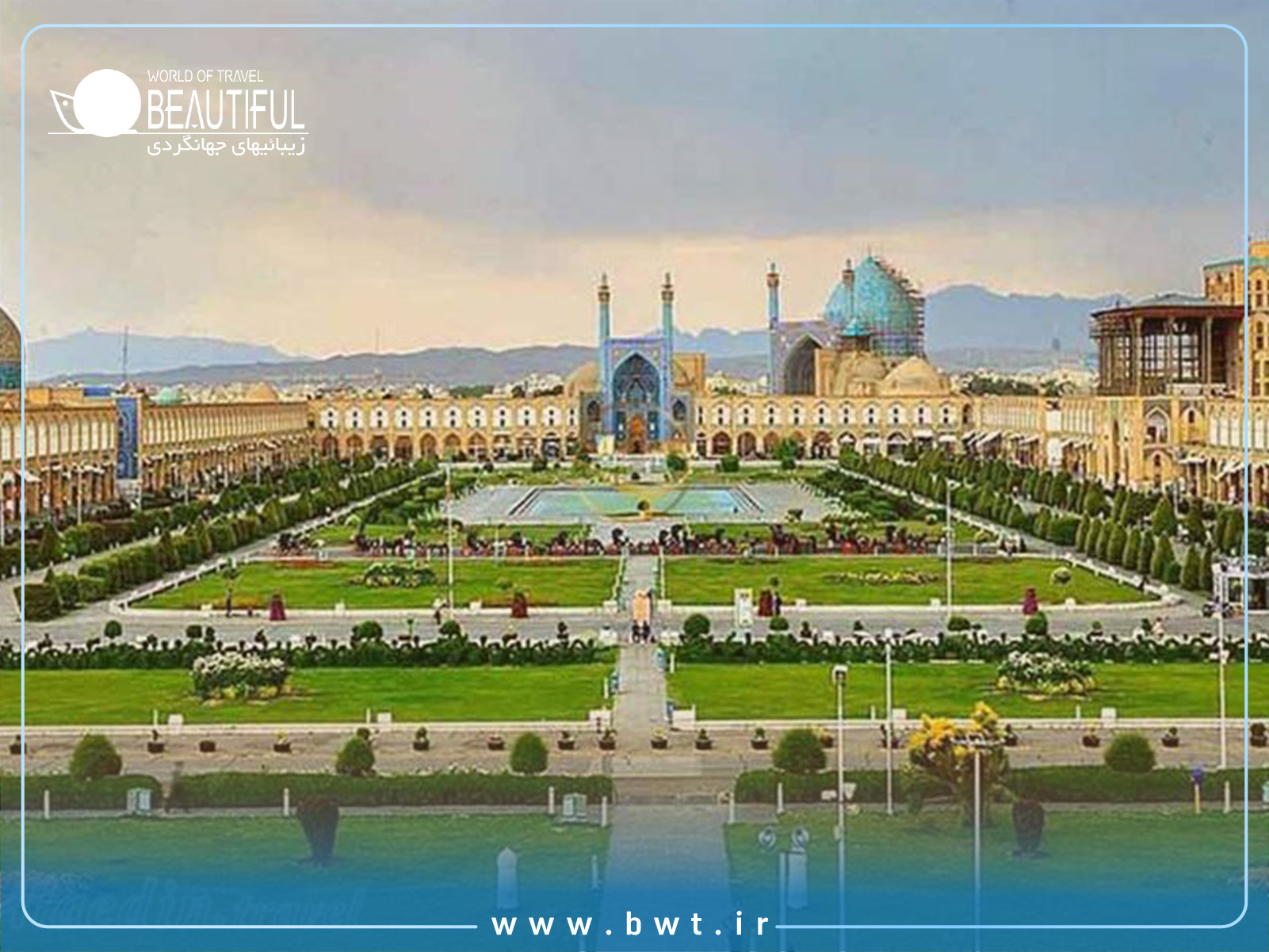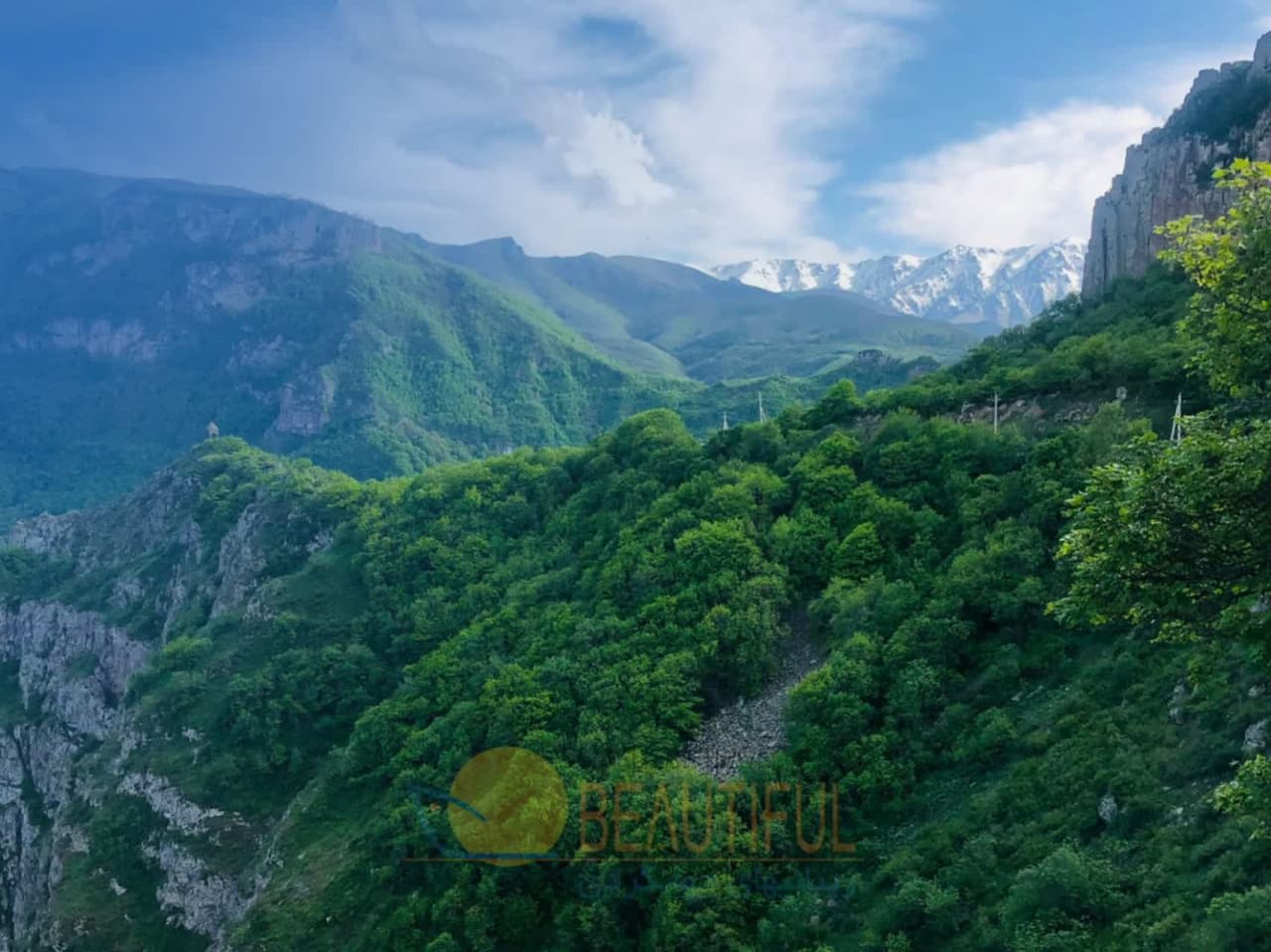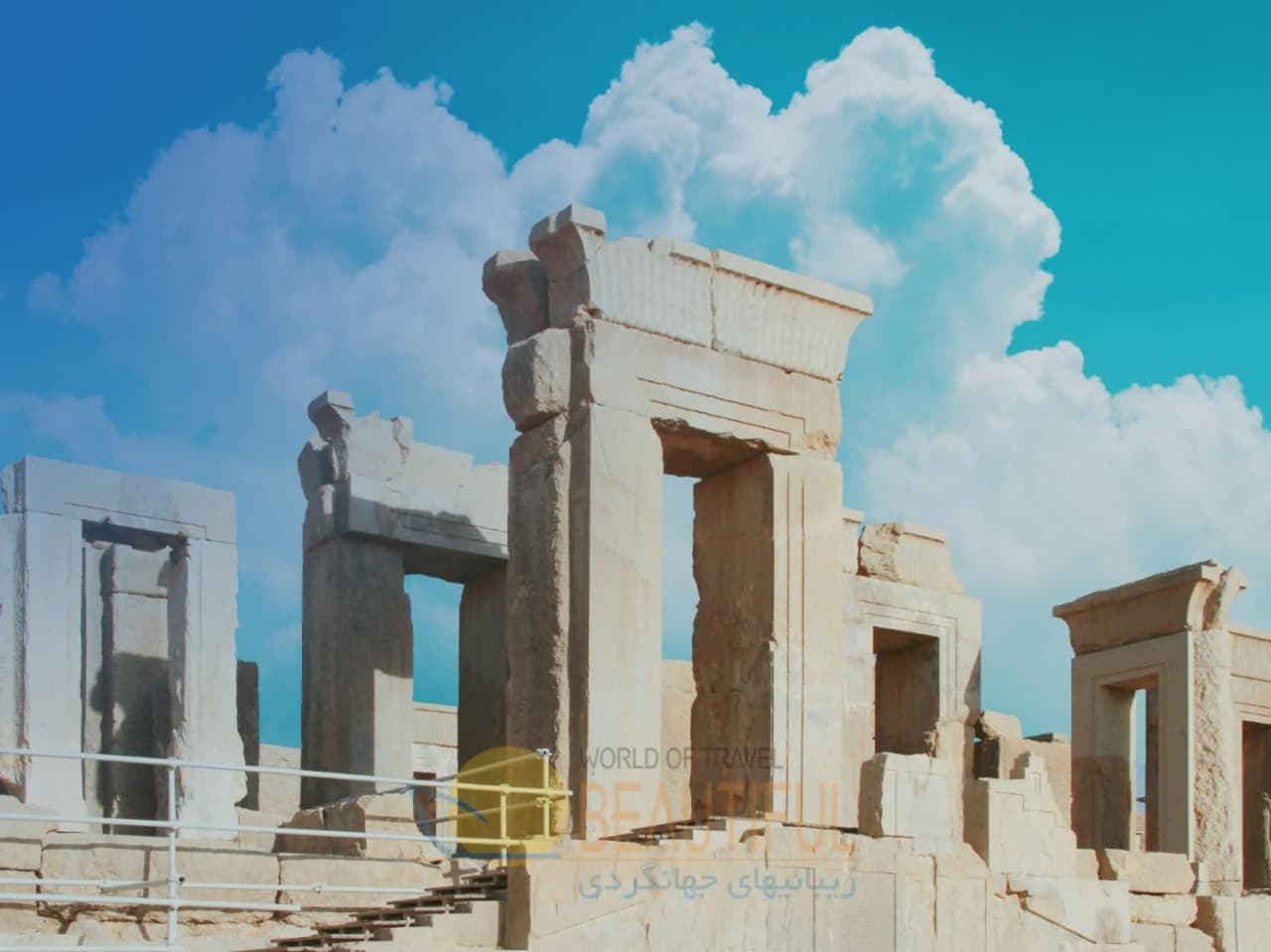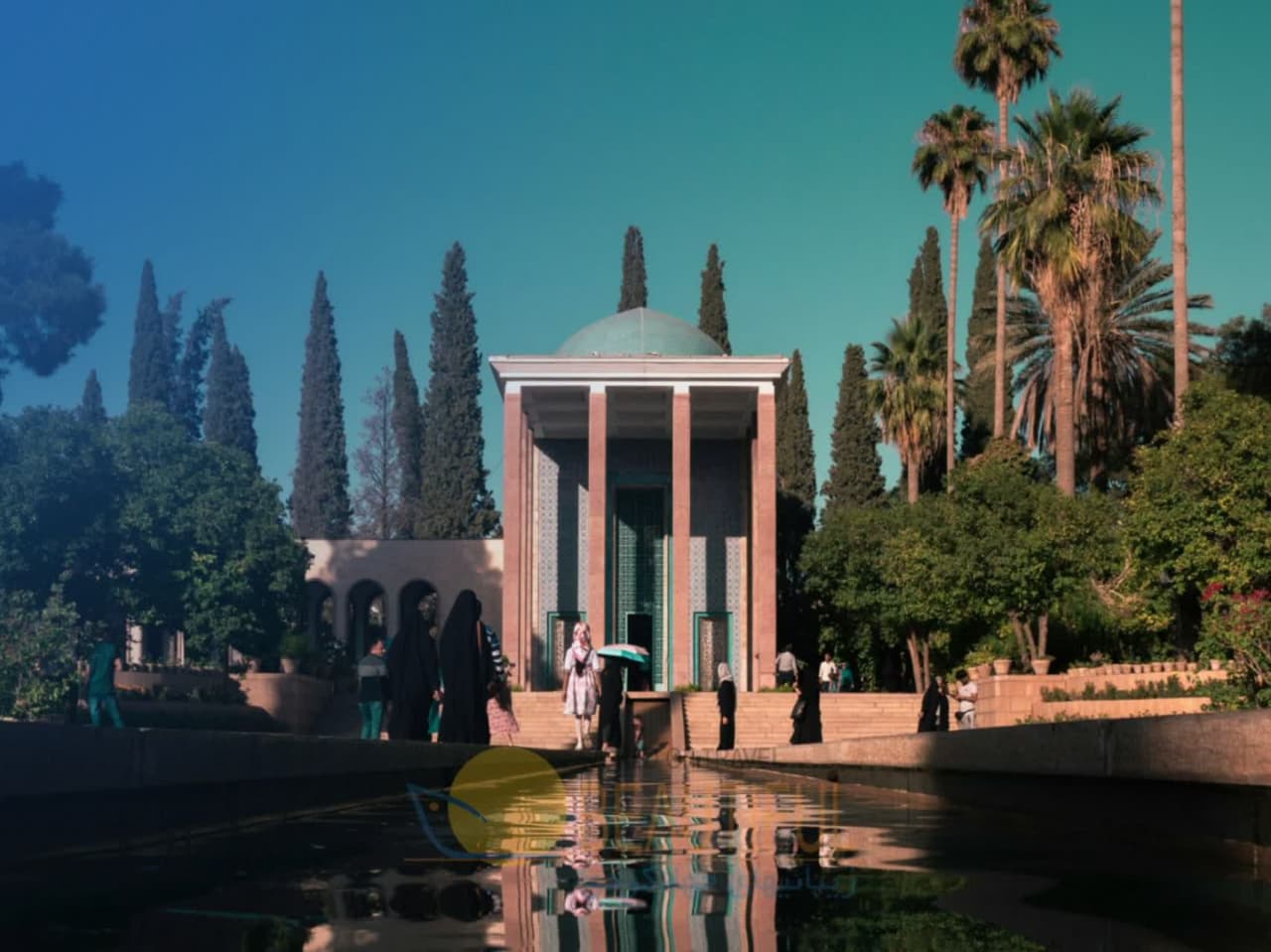Naghsh-e Jahan Square, also known as Imam Square, is one of the most important and stunning landmarks in Isfahan, Iran. This magnificent square, a UNESCO World Heritage site, is a prime example of Persian architecture and serves as a central hub for both locals and tourists. It has been a symbol of Isfahan’s rich cultural heritage and plays a vital role in the history of the city, representing the pinnacle of Safavid urban design. It is a place where history, art, and architecture converge, attracting millions of visitors from all over the world.
A Historical Overview of Naghsh-e Jahan Square
Originally known as Shah Square, Naghsh-e Jahan Square was constructed during the Safavid era in the early 17th century under the reign of Shah Abbas I. Its design was intended to be a symbol of Isfahan’s grandeur and the power of the Safavid dynasty. The square covers an area of about 89,000 square meters, making it one of the largest public squares in the world. It is framed by impressive buildings that showcase some of the finest examples of Persian architecture.
In 1935, following the Iranian Revolution, the square was officially renamed Naghsh-e Jahan, meaning "Image of the World," reflecting the significance of the square as a central piece of Iranian culture. The square was added to the UNESCO World Heritage List in 1979, which further solidified its importance as a cultural treasure.
Key Attractions of Naghsh-e Jahan Square
Naghsh-e Jahan Square is home to several historic landmarks, including iconic Persian architectural masterpieces like the Shah Mosque, Sheikh Lotfollah Mosque, Ali Qapu Palace, and the Qeysarieh Bazaar. These architectural gems make the square a must-visit destination for those interested in Persian culture and history.
Shah Mosque (Imam Mosque): Located on the southern side of the square, the Shah Mosque is one of the most famous examples of Islamic architecture in Iran. Completed in 1629, the mosque features intricate tile work, stunning domes, and breathtaking calligraphy. It has become a symbol of Persian architectural excellence and religious significance.
Sheikh Lotfollah Mosque: Situated on the eastern side of the square, this mosque is famous for its elegant and detailed interior and its unique lack of a minaret. Constructed between 1602 and 1619, the mosque was built as a private mosque for the royal court, and its design reflects the aesthetic ideals of the Safavid period. The mosque’s dome is considered one of the most beautiful in the world, with a vibrant blue and turquoise color palette that dazzles visitors.
Ali Qapu Palace: On the western side of the square lies the Ali Qapu Palace, an exquisite royal residence that once served as the official palace of the Safavid kings. The palace has six floors, and each level is adorned with beautiful frescoes, tile work, and intricate wooden ceilings. The balcony offers a panoramic view of the square, making it a popular spot for visitors to enjoy the grandeur of Naghsh-e Jahan Square from above.
Qeysarieh Bazaar: The bazaar on the northern edge of Naghsh-e Jahan Square is one of the oldest and most vibrant marketplaces in Isfahan. This historical bazaar is an important cultural center where visitors can shop for a variety of Persian handicrafts, carpets, spices, and other traditional goods. The bazaar is an architectural wonder in itself, with vaulted ceilings and winding corridors that create a unique shopping experience.
Architectural Significance
Naghsh-e Jahan Square is a masterpiece of Persian urban planning and architecture. The layout of the square reflects the symmetry and proportion that is characteristic of Persian design. The buildings surrounding the square are constructed with beautiful tile work, which is a hallmark of Persian architecture, featuring intricate geometric patterns and vibrant colors. The mosques and palaces display a blend of Islamic and Persian architectural styles, showcasing the rich history and cultural significance of the Safavid period.
The square’s design also incorporates elements of classical Persian garden design, with carefully arranged gardens and fountains that enhance the aesthetic appeal of the space. The presence of gardens and water features is an essential aspect of Persian architecture, symbolizing paradise on earth.
The Square’s Role in Iranian Culture
Naghsh-e Jahan Square has been the heart of Isfahan for centuries, serving as a venue for cultural, political, and social events. In its early days, it was the site of royal ceremonies and festivals, where the Safavid kings would entertain foreign dignitaries and celebrate military victories. Today, the square remains a cultural and social center, hosting public events, gatherings, and traditional celebrations. It is also a popular place for tourists to explore the cultural heritage of Isfahan and Iran.
The square's enduring beauty and historical significance have made it an essential part of Isfahan's identity. Visitors to Naghsh-e Jahan Square are not only able to witness the grandeur of Persian architecture but also gain a deeper understanding of Iran's cultural heritage and its historical contributions to the world.
Nearby Attractions and Cultural Heritage
In addition to the prominent landmarks around Naghsh-e Jahan Square, there are several other attractions in Isfahan that are worth exploring. These include the Chehel Sotoun Palace, the Hasht Behesht Palace, and the Jameh Mosque of Isfahan. Each of these sites offers a glimpse into the rich history and architectural brilliance of the region.
Isfahan is known for its diverse historical bazaars, which are integral to the city’s cultural fabric. The Qeysarieh Bazaar is just one example of the bustling markets in the city, where visitors can experience traditional Iranian commerce and craftsmanship.
Visiting Naghsh-e Jahan Square
For visitors, Naghsh-e Jahan Square is a place where the past and present of Iran come together. Whether exploring the mosques and palaces, shopping in the historic bazaar, or simply strolling around the square, there is something for everyone to enjoy. The square’s vibrant atmosphere, combined with its historical significance and architectural beauty, makes it one of the most important tourist destinations in Iran.
Conclusion
Naghsh-e Jahan Square is a remarkable testament to the architectural genius and cultural richness of Iran. It stands as a symbol of Isfahan’s grandeur and a reflection of Persian architectural traditions. As a UNESCO World Heritage site, it continues to attract visitors from around the globe, offering a unique opportunity to immerse oneself in the history and culture of one of Iran’s most iconic cities.
Summary:
Naghsh-e Jahan Square, also known as Imam Square, is one of the most significant historical and cultural landmarks in Isfahan, Iran. As a UNESCO World Heritage Site, it is renowned for its Persian architecture, historical monuments, and vibrant bazaars. The square is home to several major attractions including the Ali Qapu Palace, Shah Mosque (Mosquée du Shah), Sheikh Lotfollah Mosque, and the traditional Isfahan Bazaars. Visitors can immerse themselves in the city's rich cultural heritage while exploring these architectural masterpieces. The square’s wide expanse and historical depth make it a must-visit destination for travelers.
For more information about traveling to Isfahan and exploring its beautiful attractions, you can visit World of Travel Beautiful.














